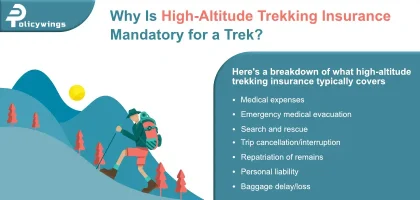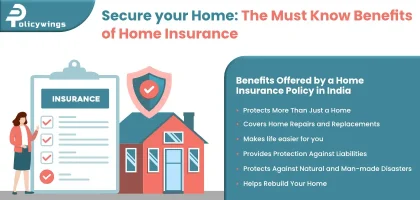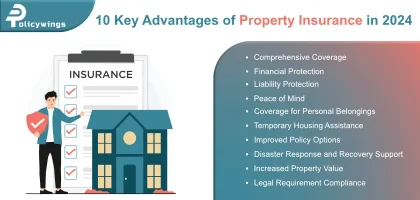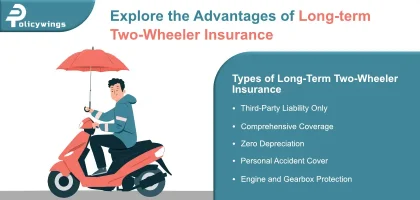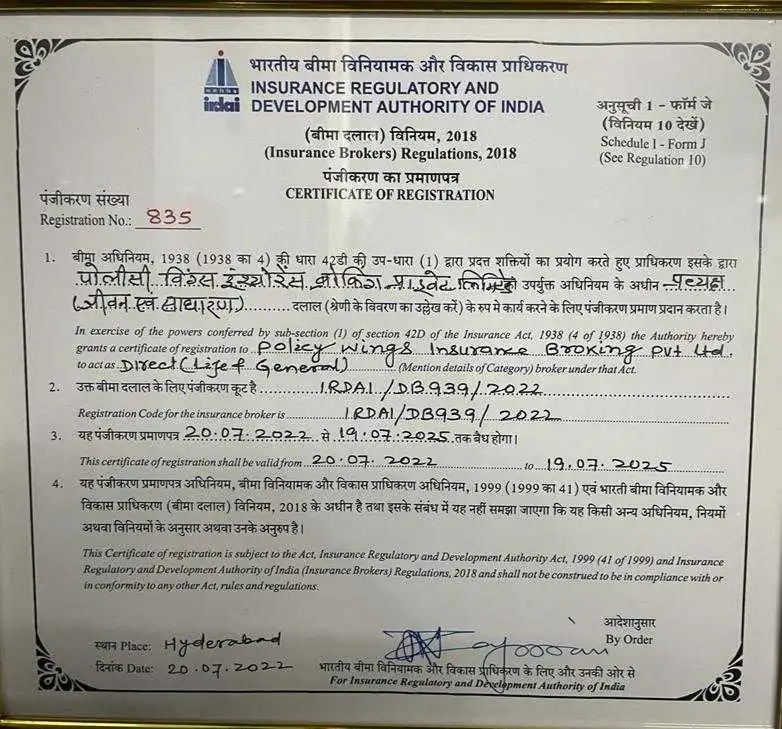Cashless Health Insurance
Cashless Health Insurance
It is an essential privilege that not everyone is able to enjoy when it comes to living a healthy lifestyle.
In the modern era, the inflation rate has reached such heights that it has become difficult to live peacefully and save money at the same time. In order to earn a living, we diligently work every day to earn.
It takes so much effort and determination. In spite of this, since life is unpredictable, even a minor accident can put us in financial difficulty.
Whenever there is a sudden and unexpected health crisis, it is important to be prepared. Until a person’s medical condition worsens to such an extent that he or she is hospitalized, many people are not aware of the fact that they are ill until it is too late.
During such a scenario, unpaid medical bills may have an effect on our ability to pay our bills in the future. However, if you opt for cashless health insurance, you won’t have to worry about dealing with such issues in the future.
What is Cashless Health Insurance?
A health insurance policy that is referred to as “cashless health insurance” is a policy in which the insurance company and the network hospital immediately cover the insured’s medical expenses. It offers the insured person the option of paying cashless for hospitalisation services so that they do not have to pay cash upfront in order to receive care.
It should be noted, however, that cashless health insurance is only available at hospitals that are part of the insurance company’s network. With a cashless health insurance plan, it is possible for the insured to manage medical crises more effectively.
Also, since the insurance company pays for the hospitalisation costs, the insured person can focus entirely on their treatment due to the fact that the expenses are covered by insurance.
For example:
Last week, Mrs Rohan Mehra encountered severe abdominal pain that was persistent. After being taken urgently to the hospital, she was discovered to have uterine fibroids that needed surgery.
However, Mr Mehra did not have to pay the hospital expenses out of pocket since he had a family floater Cashless Health Insurance. Instead of urgently trying to collect money, he can focus entirely on his wife’s health and well-being.
Features of cashless hospitalisation
A cashless health insurance plan provides a number of benefits and essentially coverage for healthcare costs.
- In-patient hospital costs
- Domiciliary services
- Daycare facilities
- Emergency Value-added Services that ambulances provide
- Free Medical Screening
- No-claim Bonus
- Coverage for Critical Illness after Organ Donation
Remember that the above-listed health insurance plans cover complete coverage. However, cashless claims may only be used to cover in-patient hospitalisation costs.
The remainder of the claim, including services provided before and after hospitalisation, ambulance costs if paid separately, etc., must only be claimed through reimbursement.
Types of Health Insurance plans that offer cashless hospitalisation
Cashless claim settlements are approved by almost all health insurance policies. Therefore, you make use of the cashless facility in –

Individual health insurance policies which offer coverage for an individual person

Plans for family health insurance which offer coverage for every member of the family

Plans for senior citizens’ health insurance are also offered.
Features that are Important for Cashless Health Insurance Plans:
Subject to the terms and conditions of your policy, there are a few laws and regulations pertaining to the cashless health insurance facility. To enable an effective reimbursement of medical costs, some essential information must be read through:
- One should look at the number of associated healthcare facilities that the insurance provider has before buying cashless medical insurance. The availability of many hospitals offering cashless hospitalisation and medical care will be ensured by a bigger number.
- To be eligible for a cashless claim, the insured person must only be treated at one of the network hospitals on the specified list.
- There is a deadline for filing a claim for cashless health insurance. Acknowledging this deadline is necessary.
- Cashless health insurance coverage can be used for both arranged and unanticipated health care costs.
Benefits of Cashless Health Insurance Plan in India
- It safeguards your savings
When you have to pay for healthcare expenses, you might be required to immediately unload or deplete your funds in order to pay the bills.
This issue, however, is also resolved by the cashless facility. There is no need for you to use your funds or spend them on treatments as the health insurance will cover all of your medical expenses. Your money is therefore kept safe. - You are entitled to The Best Care
When you have a cashless plan, you are able to get access to the most significant healthcare services without having to worry about the underlying expenses and the costs involved.
Due to the fact that the plan is covering the costs of the plan, the affordability issue has been addressed. If you need medication, all you have to do is seek it out, and your health insurance company will cover the costs. - It Provides Economic Relief
The main benefit of cashless claim settlements is the fact that you will feel more comfortable in terms of your finances.
Due to the fact that the health plan will cover all of your medical expenses, you will not need to deal with the burden of high hospitalisation fees. In this way, you have been relieved of the financial burden of a medical emergency, which had been weighing heavily on you. - Fewer documents are needed and an easier claim process
The process of making a claim without cash is less complex than making a claim with cash. In order to receive a cashless approval, all that needs to be done is to complete and submit a pre-authorisation for a claim form to the insurer in order to begin the process.
In the following days, the hospital will send the insurance company the hospital bills, reports, and records as soon as possible.
The insurer does not need to be notified of the existence of these records and you do not have to collect them yourself. As a result, the claim is settled as efficiently and as quickly as possible. - A wide range of Covering Is Possible
There is a variety of medical expenses that are included in the cashless claim facility to provide you with a broad range of financial relief.
In addition to hospitalisation charges, cashless reimbursements for claims also include costs related to treatments, doctor’s fees, nurse’s fees, surgeon’s fees, the cost of blood, oxygen, medications, etc., day care treatments, organ donation treatments, etc.
Complete list of documents required for cashless hospitalisation
Various companies may need different types of documents and certificates, however, the following is a brief list of documents that are often requested:
- Valid Photo Identification document of the Policyholder and/or insured member who has been hospitalised
- Certificate advising hospitalisation from a physician
- An original copy of the health insurance card
- Completed and signed Pre-authorisation Form
- The original bills and receipts associated with the treatment
- Reports related to all types of diagnostic and pathological tests
- Tests, medicines, and consultations prescribed by a physician
- Original discharge summary
- If applicable, an ambulance bill
- When an accident occurs, a copy of the accident report or a medical-legal certificate should be provided.
Some of the documents like photo identity proof, health card, pre-authorization form, etc. need to be provided by you at the time of hospitalisation. However, the rest of the documents to settle a cashless health insurance claim like the original discharge summary with the doctor’s prescription detailing the line of treatment, original bills and receipts of the medicines and the tests along with their reports would be provided to the insurer or its TPA (third party administrator) by the insurance desk of the hospital itself, for which you need not worry.
How Does Cashless Health Insurance Work?
When you or another covered member of your family is admitted to the hospital, the value of cashless health insurance becomes clear.
Although each health insurance company might function in a different way since they communicate with network hospitals directly, the basic process is the same.
- Network of Hospitals:
If you or another covered patient requires hospitalisation, you must first review the list of all associated hospitals. Many medical facilities are affiliated with a wide range of health insurance providers, so you can select the one that is closest to you. - Health Card:
When you obtain Cashless Health Insurance, you receive a Policy/Health Card, which you must hand over to the hospital’s insurance desk together with the insured’s KYC papers at the time of admission. - Pre-authorisation:
Once you’ve completed that, the hospital will send you a pre-authorisation form to submit to the insurance company for initial approval. The hospital will provide the necessary documents directly to the TPA, or third-party administrator, of the insurance company when they have been correctly filled out, signed, and submitted.For planned hospitalisation, you need to submit a pre-authorisation form at least 3-4 days before hospitalisation, However, for emergency hospitalisation, you can submit the pre-authorisation form within 24 hours of hospitalisation.
Note: For certain insurance organisations, the Third Party Administrator (TPA) acts as a sort of intermediate between the hospital and the health insurance provider. This company seeks to deliver cashless-service benefits in a prompt, affordable, and efficient manner for both corporate and retail health insurance.
However, modern health insurance firms lack a TPA Desk, particularly Stand Alone Health Insurance (SAHI) firms. The insurer right away resolves the claim directly. Claim Intimation:
It is advised that you inform the company at least 72 hours before the scheduled date if the hospitalisation is planned. However, you may inform the company during the first 24 hours if the hospitalisation is an emergency.- Other than In-Patient hospitalisation:
Once the above procedures are completed, the hospital and insurance provider will take care of the rest. - Final claim settlement:
The final claim for cashless treatment is done once the doctor confirms that the treatment is completed and the patient is ready for discharge. The insurance desk of the hospital need to collate all the information and send it to the insurer for final approval. If there is a portion of the claim that is not covered by the insurer, such as consumables, it needs to be paid out-of-pocket.The claims for pre and post-hospitalisation, including doctor consultation, follow-up tests and medicines need to be billed on a reimbursement basis.
Step-by-step process to avail of cashless hospitalisation
There are various ways to submit a claim for cashless health insurance; let’s go through each one in more detail:
- Planned hospitalisation:
If your hospitalisation was originally planned, there are two ways to plan your claim: online or offline:Note: You need to submit the pre-authorisation prior to admission and receive approval from the insurer before admission.
a) Making a Cashless Claim Online:
Step 1: Go to the official website of the health insurance provider and search for the list of network hospitals. Choose an area that is most easily accessible to you in terms of amenities/services offered and time spent travelling.
Step 2: When you reach the hospital, show the attendants your health/coverage card, which was provided to you by your health insurance provider when you bought the policy. Fill out a “Pre-Authorisation Form” before starting. The TPA website offers online downloading for it.
The pre-authorisation form may be filled out online by some insurers. This is especially helpful if the claim is scheduled and authorisation needs to be obtained before.
Step 3: You can meticulously fill out this form and have it on hand to be provided at the help desk or with the TPA employees present in the hospital following the hospitalisation.
Step 4: A few documents must be provided with the “Pre-Authorisation Form” such as the doctor’s advice for hospitalisation, the insured and the policyholder’s KYC documents and the health card of the insurance policy.
b) Making a Cashless Claim Offline:
Step 1: Look over the list of network hospitals in your policy documents and select the one that is nearest to your house and has the facilities and services you need.
Step 2: When you reach the hospital, show the staff your health/coverage card, which was provided to you by your health insurance provider when you bought the policy. You may then request a “Pre-Authorisation Form” from the support team or the TPA officials onsite at the hospital.
Step 3: Submit this form completely. After signing it, turn it in to the assistance desk or to a TPA associate.
Step 4: Several documents must be supplied with the “Pre-Authorisation Form”;
The hospital and the TPA will examine the documentation and the claim request form once you submit it to verify its legality and eligibility. Once authorised, the hospital will get the necessary paperwork and the cashless treatment will begin. - Emergency hospitalisation:
There are two ways to submit a claim in the event of an emergency hospitalisation: online or offline.Note: You need to submit the pre-authorisation form within 24 hours of admission.
a) Making a Cashless Claim Online:
Step 1: Go to the official website of the health insurance provider and search for the network of hospitals. Choose the location that is most accessible to you in terms of amenities/services offered and duration of travel.
Step 2: When you arrive at the hospital, show the staff your health/coverage card, which was given to you by your health insurance provider when you bought the policy.
Step 3: You must notify the insurance provider of the hospitalisation within 24 hours. You can send them an email and include the necessary documents. You must also include the “Pre-Authorisation Form,” which may be downloaded on the TPA website, with these other supporting papers.
b) Making a Cashless Claim Offline:
Step 1: Look through the list of network hospitals in your policy documents and select the one that is nearest to your house and has the facilities and services you require.
Step 2: When you arrive at the hospital, show the attendants your health/coverage card, which was given to you by the health insurance company when you acquired the policy.
Step 3: Within 24 hours after getting admitted to the hospital, you must notify the insurance provider or the TPA representatives on-site by phone or through the hospital’s insurance help desk. In addition, you must request a “Pre-Authorisation Form” from the Helpdesk or the TPA representatives present at the hospital.
Step 4: A few documents must be presented with the “Pre-Authorisation Form.”
The hospital and the TPA will review the documentation and the claim request form once you submit it to verify its legality and eligibility. Once authorised, the hospital will get the necessary paperwork and the cashless treatment will get started.
What is Not Covered in Cashless Health Insurance?
Here is a list of some of the medical costs or treatments for the following don’t usually get covered by cashless health plans:
- Consumables’ price, unless otherwise stated
- Service charges
- Cost of attendant
- Cost of additional food order in-room
- Toiletries
- Specifically excluded treatments
- Hospitalisation for cases of claims that are not covered, etc.
Reasons for Claim Rejection in a Cashless Mediclaim Policy
Even though health insurance companies have simplified the claims procedure, your cashless claim may still be rejected in particular situations. The following are the top 5 reasons such a claim is rejected:
- The condition for which you are filing a claim—illness, injury, or medical care—is not covered by the plan.
- Your policy’s insured amount has been lowered due to prior claims.
- Your insurance policy is no longer active.
- The pre-authorisation form is incomplete or inaccurate.
- You delayed reporting the claim to the insurance provider or TPA.
- There is no defined line of treatment and hospital admission was purely done for investigation purposes only.
However, if your cashless claim gets denied, and you think that you should the claim, you can make the payment out-of-pocket and then file a reimbursement claim.
Things to Keep in Mind Before Buying a Cashless Health Insurance Plan
Are you concerned about filing a claim without cash? Do you find the procedure to be tedious? So, no need to worry. You should bear in mind the following helpful advice before filing a cashless claim:
- It is crucial to inform the insurance provider as soon as possible. Whether or not the hospitalisation was anticipated or not. As a result, the insurer will be able to assess the policy and approve the claim request based on this information. There is an exception to this rule in the case of emergency care.
- Be sure to keep a close eye on the details. Ensure that all the facts relevant to the strategy are kept close at hand at all times. You can contact your insurance provider if you need immediate hospitalisation and receive help as soon as possible.
- Information should be provided in an appropriate manner. In the pre-authorisation form, the patient is required to provide essential information such as his or her medical background, existing ailments, charges, etc. It is essential that accurate information is provided so that the claims can be handled in a timely manner.
- It is crucial to understand both the policy’s inclusions and exclusions in order to make sure you are protected. In order to be prepared for potential expenditures, it is always beneficial to be aware of them and to anticipate them beforehand. If you are aware of the plan, it will be easier for you to follow it.
Conclusion
We live in an unpredictable world, and when we experience a medical crisis here at home, it can cause a great deal of anxiety and tension. During such a time, if the financial aspect of treatment is taken care of, it can act as a great relief and a weight taken off your shoulders. With cashless health insurance, you would be able to handle unpredictable situations with a lot more ease and confidence than you would with a regular health insurance plan.
Frequently Asked Questions
No, you are no longer qualified to file a claim when the coverage ends. Even though you only have a 30-day window within the grace period to pay for and renew your policy, failing to do so would prevent you from using any of the insurance's advantages. So, remember to renew your policy on time and if you need to get admitted in the grace period, pay your premiums first for your claim to be accepted.
In accordance with Section 80D, the premium for the cashless health insurance plan is deductible. If you are under 60, you are eligible for a deduction of up to Rs. 25,000. Senior citizens are eligible for a deduction of up to Rs. 50,000.
Additionally, if you pay the premiums for your parent's health insurance coverage, you may be eligible for a further discount on the premium paid off up to Rs. 50,000 if any of them are more than 60 years of age.
Yes. Most health insurance companies require that you notify them at least 48 hours in advance of your planned or anticipated hospital admission if you want to use one of their network hospitals.
A network hospital is a hospital, healthcare facility, or medical office that has an arrangement with a health insurance provider to provide cashless care to policyholders. You cannot receive cashless treatment if you are not admitted to a network hospital. However, it's advised that you examine all the specifics with your health insurance provider because you could be qualified for reimbursement.
Leading Health Insurance Companies







